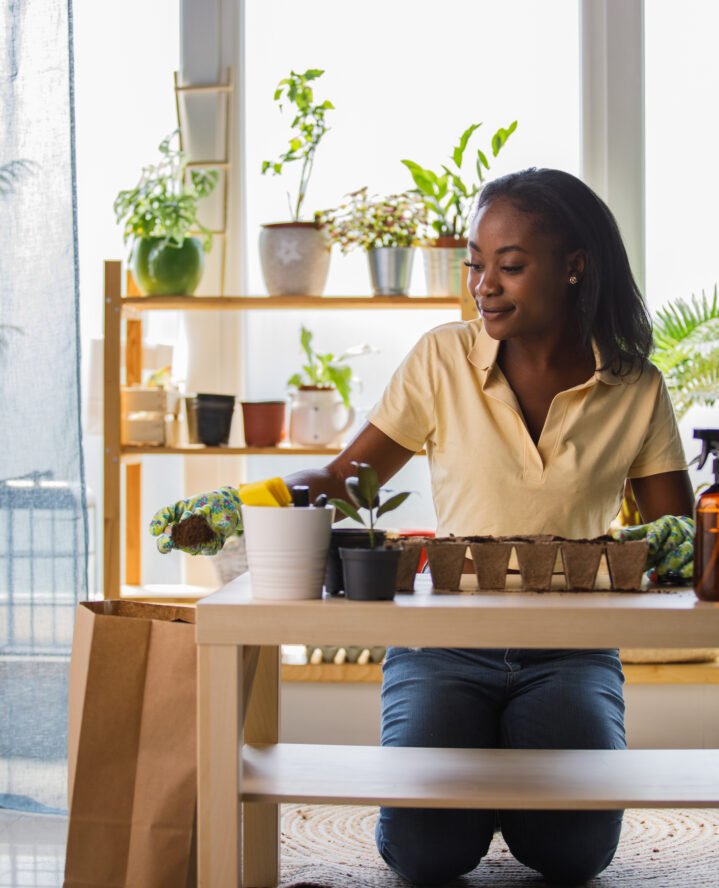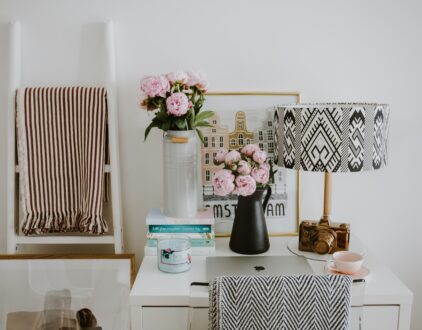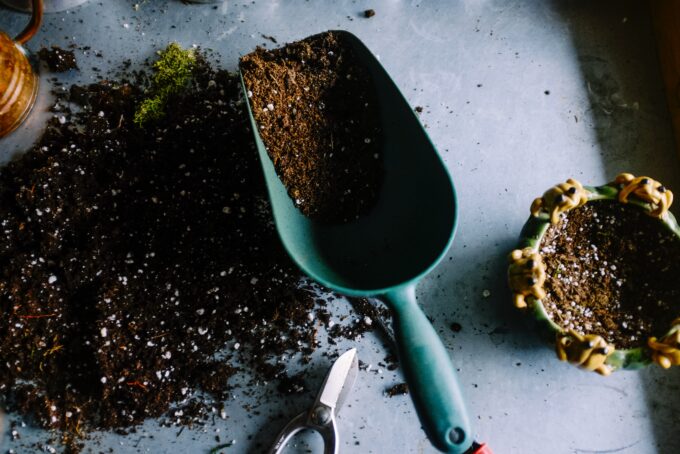Imagine firing up the skillet to create a hearty breakfast, and instead of digging through your spice cabinet, you reach over and pluck fresh basil or snip a sprig of newly sprouted rosemary to add to your dish. Even if you don’t have the right space in your backyard or balcony, you can grow your very own indoor garden within the comfort of your home. It’s not only a fantastic way to spruce up your space but also a rewarding experience that allows you to flex your green thumbs and nurture your own little plant paradise. If you’ve been thinking about creating an oasis of plants and herbs, these tips and tricks will help you get started.
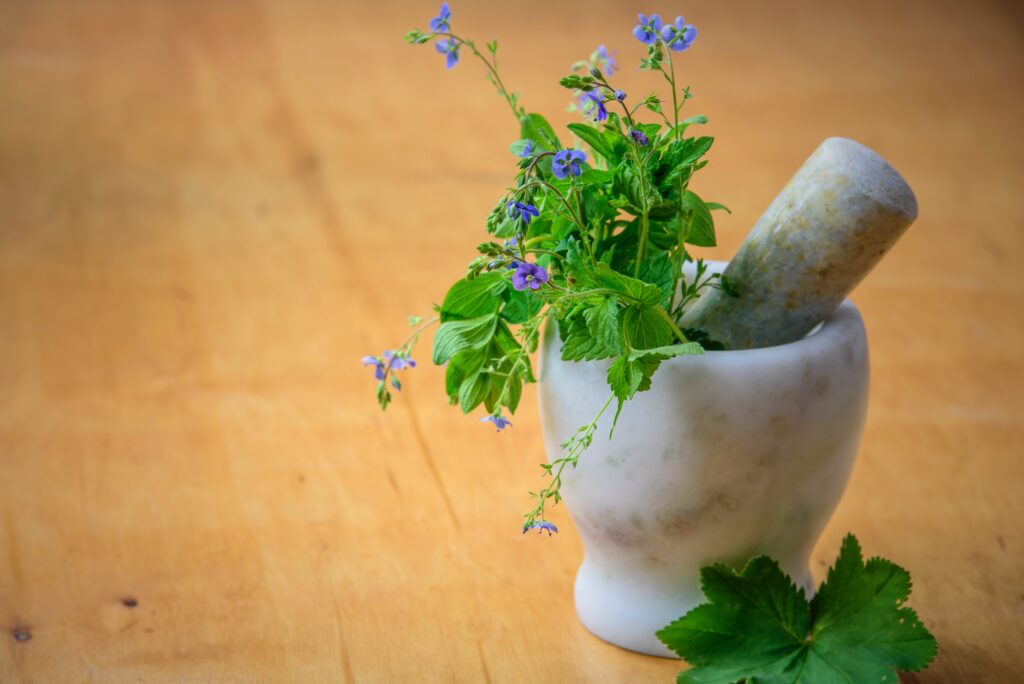
Prepping Your Space for an Indoor Garden
When it comes to selecting plants for your indoor garden, you have plenty of choices. But before you start dreaming up the perfect garden for your recipes, you’ll want to take a few important factors into consideration.
Assessing Light Requirements
Herbs, like sun-loving stars, thrive in bright light. Before selecting your plants, evaluate the lighting conditions in your home. Place your garden near a south-facing window where they can bask in the warm sunlight. If natural light is limited, think about supplementing with artificial lighting to provide the necessary brightness for their growth.
Considering Space and Size
While herbs and small vegetables generally don’t require a lot of space, it’s essential to understand their growth habits and ultimate size. Some herbs, like basil and mint, can spread and fill a container, while others, like thyme and rosemary, tend to grow more compactly. Plan accordingly and choose the greens that suit the available space in your indoor garden.
Evaluating Maintenance Needs
Different plants have varying maintenance requirements, including watering, pruning, and fertilizing. Some herbs, such as oregano and thyme, are relatively low-maintenance and forgiving, while others, like cilantro and basil, require regular attention to thrive.
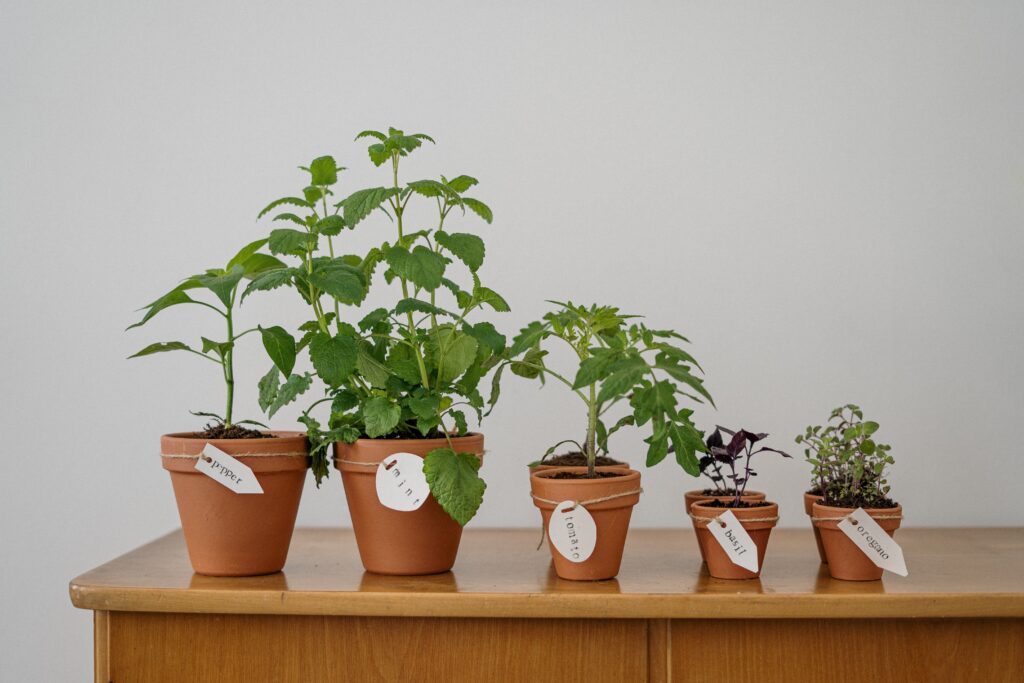
Choosing Containers for Your Indoor Garden
The choice of containers not only serves a practical purpose but also adds aesthetic appeal to your kitchen or living space. You’re also not limited to specific containers. For example, you could always repurpose candle jars or even egg cartons.
Pots and Planters
Traditional pots and planters are versatile options for growing. Make sure to choose containers with proper drainage holes to prevent water-logging and root rot. Look for materials such as terracotta or ceramic, which help regulate moisture levels.
Hanging Baskets
Hanging baskets not only save space but also create an eye-catching display. Select lightweight baskets with liners that retain moisture, and make sure they are secure when hung. Herbs like trailing rosemary or cascading thyme work beautifully in hanging baskets.
Vertical Gardens
Vertical gardens are a creative and space-efficient way to grow plants indoors, especially tomatoes which love climbing up their vines. They utilize wall space and provide an attractive focal point. Vertical garden systems with built-in irrigation can simplify watering and care.
Providing the Right Lighting for Your Indoor Garden
Proper lighting is crucial for top-tier growth and flavor. You already know ample lighting is ideal, but if that’s not available in your space, you still have a few ways to manipulate natural conditions.
Understanding Natural Light
Position your garden near a sunny window that receives at least six hours of direct sunlight each day. As mentioned, south-facing windows are usually the best for providing ample light. Rotate your plants periodically to give them even exposure to sunlight.
Supplementing with Artificial Lighting
If natural light is limited, supplement it with artificial lighting. LED grow lights, especially in hydroponic gardens, are energy-efficient and provide the optimal spectrum for growth. Place the lights at an appropriate distance from the plants so they receive plenty of light for photosynthesis.

Caring for Your Indoor Garden
To keep your plants healthy and productive, proper care and attention are vital. Follow these guidelines.
Watering Techniques
Your plants will prefer slightly dry conditions, so water them when the top inch of soil feels dry. Avoid overwatering, as it can lead to root rot. Use your finger or a moisture meter to check the soil moisture level before watering.
Fertilizing Indoor Plants
Herbs and small vegetables benefit from occasional fertilization to replenish nutrients. Follow the instructions on the fertilizer packaging to avoid over-fertilizing, which can affect the flavor of the plants.
Monitoring Humidity Levels
Most young seedlings thrive in moderate humidity levels. If the air in your home is dry, especially during winter, try using a humidifier or placing a tray of water near the garden to increase moisture in the surrounding air.
Pruning and Harvesting
Regular pruning promotes bushier growth and prevents your plants from becoming leggy. Harvest your garden frequently to encourage new growth and ensure the best flavor. Use sharp scissors or pruning shears to make clean cuts just above a leaf node.
Selecting Herbs, Spices and Veggies for Your Indoor Garden
Armed with all the information you need to get started, it’s time to select your plants to begin growing. Depending on your tastes and preferences, it’s entirely up to you, but these beginner herbs are great for getting started:
- Basil
- Mint
- Rosemary
- Thyme
- Green onions
- Oregano
- Cilantro
- Cherry tomatoes
- Lettuce
- Dill
popular posts
- 1It’s Black Business Month, So Let’s Go Shopping and #BuyBlack!
- 2These Home Decor Items Will Instantly Make Your Space Look Outdated
- 3Black-Owned Home Decor Stores To Support Across the United States
- 4A Look Inside Elon Musk's Tiny $50,000 House
- 57 Black and Multicultural Designers To Follow For Design Inspo
Spaces
Whether it’s luxury or ease, every area of your home should be as fabulous and unique as you.
FOLLOW ALONG ON INSTAGRAM
#homeandtexture
Find us on social for more home inspiration where culture, personal style, and sophisticated shopping intersect to help you create a home where you love to live.
